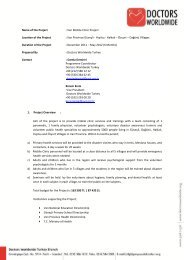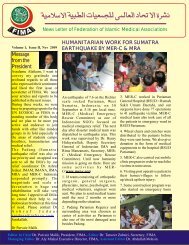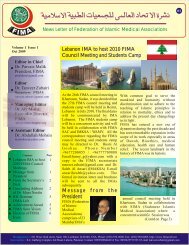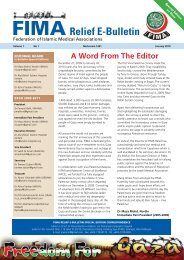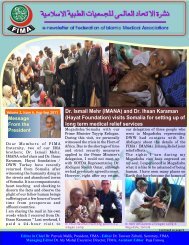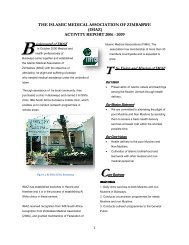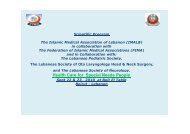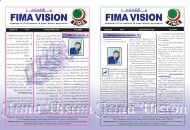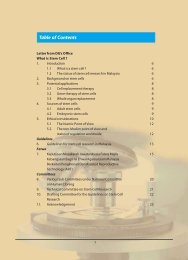FIMA Year Book 2009 - Federation of Islamic Medical Associations
FIMA Year Book 2009 - Federation of Islamic Medical Associations
FIMA Year Book 2009 - Federation of Islamic Medical Associations
You also want an ePaper? Increase the reach of your titles
YUMPU automatically turns print PDFs into web optimized ePapers that Google loves.
Muslim Contributions1. Research Activity2. Research Utilization3. Knowledge Management4. Organizational LearningA new concept here is that <strong>of</strong> “Knowledge Management” (KM). Definitions<strong>of</strong> KM vary, but many include the core processes <strong>of</strong> creation or development<strong>of</strong> knowledge, its movement, transfer, or flow through the organisation, andits application or use for performance improvement or innovation (57) .Early models <strong>of</strong> KM focused on the measurement <strong>of</strong> available knowledgeassets and intellectual capital, with later models focusing on processes <strong>of</strong>managing knowledge in organisations, split into models where technicalrationalityand information technology solutions were central and academicmodels focusing on human factors and transactional processes (57) . The moreemergent view is <strong>of</strong> the organisation, academic or otherwise, as ‘milieu’ orcommunity <strong>of</strong> practice, where the focus on explanatory variables shiftsaway from technology towards the level <strong>of</strong> interactions between individuals,and the potential for collective learning. However, technical models andsolutions are also still quite dominant in healthcare and academics (58,59) .STEP – 6 and 7: Establishment <strong>of</strong> Muslim <strong>Medical</strong> Colleges with Respectable Research Output.It is the writers’ sincere belief that, provided all the preliminary steps ( 1-5 )are followed, realization <strong>of</strong> goals outlined in Tables 1 and 2 will be achievedin due course, insha’Allah. One key critical success factor towards achievingthese goals is for the institution involved to be proactive and methodicalin identifying the goals and implementing steps to achieve it. This articleis concluded with a brief outline <strong>of</strong> factors that, if found in participatinginstitutions, will either prove detrimental or beneficial in achieving theintended goals <strong>of</strong> the whole exercise. These factors need to be recognized,pursued, removed or implemented either prior to initiating this exercise orin the course <strong>of</strong> doing it. These factors include, but not limited to:• Lack <strong>of</strong> organizational motivation to carry out the exercise: Althoughheads <strong>of</strong> institutions may be highly motivated, the level <strong>of</strong> involvement<strong>of</strong> their faculties is the key to their long term commitment to success. Itshould be presented as a basic requirement to qualify for participation.Coherence <strong>of</strong> institutional heads with their faculties is very easy toassess in open exchange <strong>of</strong> dialogue.• Strength <strong>of</strong> Department <strong>of</strong> <strong>Medical</strong> Education and Research: Sincethis is actually a capacity building exercise, the actual qualificationsand personnel <strong>of</strong> these key areas at ground level may not besatisfactory. However, the key organization needs to assure high level<strong>of</strong> understanding, pr<strong>of</strong>essionalism, sincerity, transparency and above all<strong>FIMA</strong> <strong>Year</strong><strong>Book</strong> <strong>2009</strong>123




